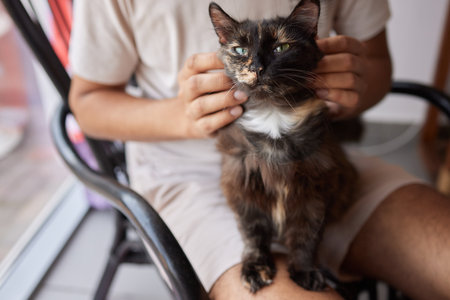Understanding Feline Dental Health
When we think about our cats’ health, dental care isn’t usually the first thing that comes to mind. However, understanding feline dental health is essential for any responsible cat parent in the U.S. Just like people, cats can suffer from a variety of oral health issues, including periodontal disease, gingivitis, and tooth resorption. These conditions often go unnoticed until they become painful or severe because cats are experts at hiding discomfort. Dental problems can lead not only to bad breath and tooth loss but also to more serious health concerns, such as heart, liver, or kidney issues caused by bacteria entering the bloodstream through infected gums. Prioritizing your cat’s oral care means you’re not just keeping their teeth clean—you’re safeguarding their overall well-being and helping them live happier, healthier lives.
2. Recognizing Signs of Dental Problems
Spotting dental issues early in your cat can make a world of difference for their health and comfort. Cats are experts at hiding discomfort, so as a pet parent, it’s important to pay attention to subtle changes in their behavior or appearance. Some common warning signs that may indicate dental problems include bad breath (halitosis), excessive drooling, difficulty eating, pawing at the mouth, and visible tartar buildup on teeth. These symptoms can sometimes be easy to miss, especially if you’re not sure what to look for. That’s why it’s helpful to keep an eye on your cat’s daily habits and do regular at-home checks.
Common Symptoms of Feline Dental Issues
| Sign | What to Watch For |
|---|---|
| Bad Breath | Persistent odor, often stronger than normal “cat breath” |
| Drooling | Unusual wetness around the mouth or chin |
| Eating Habits | Reluctance to eat dry food, dropping food, chewing on one side |
| Pawing at Mouth | Frequently scratching or rubbing face with paws |
| Tartar & Gum Changes | Yellow or brown buildup, red/swollen gums, bleeding when eating or grooming |
If you notice any combination of these symptoms, it’s a good idea to consult your veterinarian sooner rather than later. Early detection can prevent minor dental issues from becoming major health concerns. Remember: even indoor cats are at risk for dental disease, so regular observation is key to keeping those feline smiles healthy.

3. Home Dental Care Tips
Keeping your cat’s teeth and gums healthy doesn’t have to be a chore. With a few simple habits, you can make dental care an easy part of your cat’s daily routine—and protect them from serious health problems down the road. Here are some practical tips for effective at-home feline dental care:
Toothbrushing: The Gold Standard
Brushing your cat’s teeth is hands down the most effective way to prevent plaque and tartar buildup. Start by choosing a toothbrush designed specifically for cats—these usually have softer bristles and a smaller head to fit comfortably in your cat’s mouth. Pair it with a pet-safe toothpaste (never use human toothpaste, as it can be toxic to cats). Begin slowly, letting your cat get used to the taste and feel of the brush, and aim for at least two to three brushings per week. Patience and positive reinforcement—like treats or praise—will help turn toothbrushing into a tolerable, even enjoyable, routine.
Dental Treats and Chews
If your cat isn’t quite ready for brushing, dental treats and chews can be a helpful supplement. Look for products approved by the Veterinary Oral Health Council (VOHC), which are proven to help reduce plaque and tartar. These treats work by gently scraping away buildup as your cat chews, and they’re often flavored to entice even picky eaters. Remember, treats should only be part of their dental routine—not a replacement for brushing.
Choosing the Right Dental Products
The market is full of feline dental products, but not all are created equal. When shopping for dental rinses, water additives, or gels, always check that they are specifically formulated for cats and preferably vet-recommended or VOHC-approved. Some products contain enzymes that break down bacteria and food particles, offering extra protection between brushings.
Establishing a Routine
The key to successful home dental care is consistency. Pick a time when your cat is relaxed—perhaps after playtime or before bed—to handle their teeth. Even if you can only start with short sessions or just handling their mouth gently, every step forward helps build trust and familiarity.
Watch for Warning Signs
While at-home care goes a long way, keep an eye out for symptoms like bad breath, drooling, swollen gums, or reluctance to eat—these may signal dental disease that requires professional attention. Regular check-ups with your veterinarian will complement your home efforts and ensure your cat’s smile stays healthy year-round.
4. The Role of Diet in Oral Health
When it comes to your cat’s dental health, what goes into their food bowl can make a huge difference. Nutrition plays a critical role in preventing plaque buildup and supporting healthy teeth and gums. In the U.S., many pet parents are turning to specialized diets and dental treats designed specifically for feline oral care. But how do these options actually help, and what should you look for?
How Nutrition Impacts Your Cat’s Teeth
A balanced diet is the foundation of overall health, including your cat’s mouth. Cats fed with high-quality commercial foods—especially those formulated for dental health—tend to have less plaque and tartar than cats who eat only soft or homemade foods. Kibble designed for dental care is often shaped and textured to gently scrub teeth as your cat chews, while some ingredients may help reduce bacteria that cause bad breath and gum disease.
Comparing Diet Types: Pros & Cons for Dental Health
| Diet Type | Benefits for Dental Health | Potential Drawbacks |
|---|---|---|
| Dry Food (Dental Formula) | Helps scrape off plaque; Some contain additives to reduce tartar | Not suitable for all cats; Some may still swallow kibble whole |
| Wet Food | Easier for older cats to eat; Hydrating | Sticks to teeth; Can promote plaque buildup if not balanced with other care |
| Raw Diet | Natural texture can aid chewing; Bones may help clean teeth | Risk of bacterial contamination; Must be carefully managed |
Specialized Dental Treats and Supplements
Dental treats approved by the Veterinary Oral Health Council (VOHC) can be a great addition to your cat’s routine. These treats are formulated to reduce plaque and tartar, but they should not replace daily brushing or regular vet visits. Look for products that display the VOHC seal for extra peace of mind.
Nutritional supplements like enzymatic powders or water additives can also support oral hygiene, especially if your cat resists brushing. Always consult your veterinarian before introducing new foods or supplements to ensure they fit your cat’s specific needs.
5. Importance of Professional Veterinary Care
Even the most diligent cat owners can’t replace the expertise of a veterinary professional when it comes to feline dental care. Regular checkups with your vet are crucial for early detection of dental issues that may not be visible or apparent at home. During these visits, veterinarians perform thorough oral exams, looking for signs of gum disease, tartar buildup, loose teeth, or any abnormalities in your cat’s mouth.
Why Routine Dental Checkups Matter
Cats are masters at hiding discomfort, and dental pain often goes unnoticed until it’s severe. Routine checkups allow vets to catch problems like gingivitis, tooth resorption, or infections before they escalate into major health concerns. Early intervention can save your cat from unnecessary pain and help avoid more invasive procedures down the road.
The Role of Professional Cleanings
No matter how committed you are to brushing your cat’s teeth at home, professional cleanings under anesthesia are sometimes necessary. These cleanings remove stubborn tartar and plaque that simple brushing can’t reach, especially below the gumline. Your vet will use specialized tools to thoroughly clean each tooth and inspect for hidden issues.
Diagnosis and Treatment by Experts
If your vet discovers dental problems during an exam or cleaning, they’re equipped to provide appropriate treatment—whether that means antibiotics for infection, tooth extractions, or guidance on managing chronic conditions like stomatitis. They might also recommend dental X-rays to get a clearer view of what’s happening beneath the surface. Trusting your vet ensures your cat gets the best possible care and keeps their smile healthy for years to come.
6. Making Dental Care Stress-Free
Helping your cat feel comfortable with dental care is all about understanding their natural behaviors and gradually building positive routines. Cats are creatures of habit, so the more you can make tooth brushing and gum checks part of their regular life, the easier it will become for both of you.
Tips for Building Positive Routines
Start slow by letting your cat get used to the smell and taste of cat-safe toothpaste—offer a little on your finger as a treat. Next, introduce the toothbrush or finger brush without brushing, simply letting your cat sniff and explore. Gradually work up to gently touching their teeth and gums, rewarding them with praise or a favorite treat after each session. Consistency is key; try to incorporate dental care into your daily or weekly routine at the same time each day to create predictability and reduce anxiety.
Understanding Cat Behavior
Cats respond best to calm, gentle handling. Watch for signs of stress such as flattened ears or twitching tails, and give your cat plenty of breaks if they seem uncomfortable. Remember, never force the process—patience and encouragement go a long way toward building trust. Over time, most cats will tolerate, and even enjoy, this one-on-one attention when it’s paired with positive reinforcement.
Making Dental Care a Natural Part of Life
Think of dental care like playtime or feeding: a regular activity that’s woven into your cat’s everyday routine. By approaching dental hygiene as something normal and rewarding, you help ensure your cat’s mouth stays healthy for years to come—and you’ll both feel less stressed in the process. If challenges persist, talk to your vet or seek out feline behavior resources for extra tips tailored to your individual cat’s needs.

